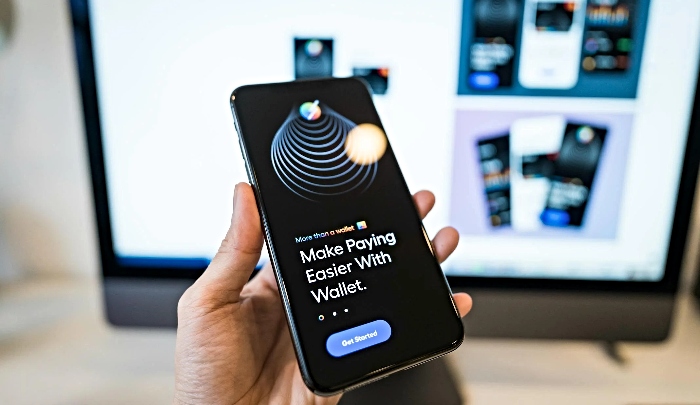
The world of online payments has come a long way in the last couple of decades.
Now it’s common to see people leaning towards e-wallets for both in-person point-of-sale transactions and online purchases.
They have become ubiquitous in day-to-day life, largely embedded there through convenience.
But are they the most secure option for payments, and do they carry any potential risks?
What is a Digital Wallet?
A digital wallet, often referred to as an e-wallet, allows a user to make a digital payment with a mobile device.
This is typically done through an app installed on a mobile phone.
From shopping to playing casino games at the UK’s most visited betting sites, e-wallets provide a layer of security between the user and the merchant.
The surge of online betting and casino sites has created a massive online industry and, tying into features like mobile casino and in-play sports betting, mobile payment options have come to the fore in the sector.
Digital wallets have become the go-to alternative to card or bank transfers because they typically provide faster processing times, which is just part of the overall convenience.
The Convenience
A digital wallet essentially replaces a physical wallet. E-wallets eliminate the need for carrying cash or any form of debit or credit card, as they are widely accepted.
A tap of a phone can be used to pay for public transportation, grab a coffee, snap up a new pair of shoes that are on sale or purchase tickets for a sports event.
For online shopping, once an e-wallet is set up, to check out it’s just a simple login confirmation required to process a transaction.
Login details are typically encrypted by the device storing them, adding another layer of security.
Also being widely accepted at online stores, gaming sites, and subscription services, it’s a superb digital solution to which multiple payment sources can be added.
The Growth of E-Wallets
A 2024 survey discovered that 21% of British people used a digital wallet regularly to pay for goods or services with their phones in person.
Not too surprisingly, the results showed that the demographic that leans on the technology the most are the younger generations, Millennials and Gen Z.
PayPal, one of the sector’s pioneers, is the most often used digital wallet. A third of all digital wallet transactions done in the UK are through the platform.
Overall, the use of e-wallets does not yet match the volume of transactions done with a card; just 10% of point-of-service transactions in the UK during 2023 were by digital wallet.
But the growth of the digital option is on a steep upward curve and in the arena of e-commerce, the mobile wallet option ranks king, with 49% of all payments completed by e-wallet.
Security
With new technology, often comes a degree of scepticism about its security and safety.
With the prevalence of scams, there is a natural hesitation about adopting a digital payment option—more so among the older generations.
But there is good security woven into the technology, and digital wallets can be even more secure than a physical card.
To set up a digital wallet, details of a bank card will be entered as a link for pre-authorised payment, and that information is heavily encrypted.
The card details, along with any other personally identifiable information, get tokenised.
Tokenisation is where the sensitive data is locked by a unique string of numeric or alphanumeric characters.
That random value, unique to the card information, is then securely transmitted for the transaction.
In comparison, visiting an e-commerce site or an online casino and directly plugging in card details, feels far less secure.
While those kinds of transactions are still encrypted, the fact that they directly involve entering the actual card details, which are usually stored by a merchant, opens the door to more vulnerability.
Further Security
Because e-wallets are typically operated through apps on mobile phones, other elements of security are naturally integrated.
The locking of apps themselves through features like authenticators and two-factor authentication is part of the security of e-wallet apps.
Phones themselves should be locked at the very minimum with a passcode, but biometric security—like a thumbprint or facial recognition—adds further strengths.
Those things stacked up can make for a fantastic defence, especially compared to how a physical card is handled.
What are the Risks of E-wallets?
The comparative risks of using an e-wallet for an online payment compared to a card appear low.
On a smartphone, should it get stolen, to gain access to the payment method the perpetrator would have to either crack the passcode or somehow possess your thumbprint or face to just get into the device, before facing the wall of an app’s two-factor authentication.
With bank card or credit card—with its details immediately viewable—when a holder gets one out to tap or swipe on a POS terminal or enter on a website, it doesn’t have that up-front blanket of security.
Because e-wallets encrypt transaction information, there is no way for the card details to be intercepted by card skimmers at a point of service either, another vulnerable area for physical cards.
Virtual Cards
E-wallets are strong and secure, but is there an even better option?
Virtual cards are, for some, an even more secure option than e-wallet payments due to the merchant-specific details and limit controls they offer.
They are not replications of physical debit cards, instead, unique cards generated by the financial institution, with their own CCV, card number, and expiration dates.
A virtual card, which some digital wallets offer, can be set up for a single payment, be viable for use at one particular merchant plus have a set user-defined spending limit for a transaction.
By using that for a digital payment instead of the real card, it eliminates the threat of the latter being fraudulently used, simply because its details are never sent out.
Another reason why virtual cards may outshine e-wallets is their versatility because they can be used at any online merchant, whereas not all e-commerce sites accept digital wallets.
Staying Secure
Digital wallets are secure devices that interface with a bank for payments, and all the established major ones are free to set up and maintain.
As with any form of payment, there is always some kind of loop, a vulnerability that could potentially be exploited.
In most instances for e-wallets, it is down to user error when not adding all possible layers of security, like 2FA, and skipping on security measures, like secure browser connections on websites and passwords.
(photo from pexels.com by Tranmautritam)

















Recent Comments